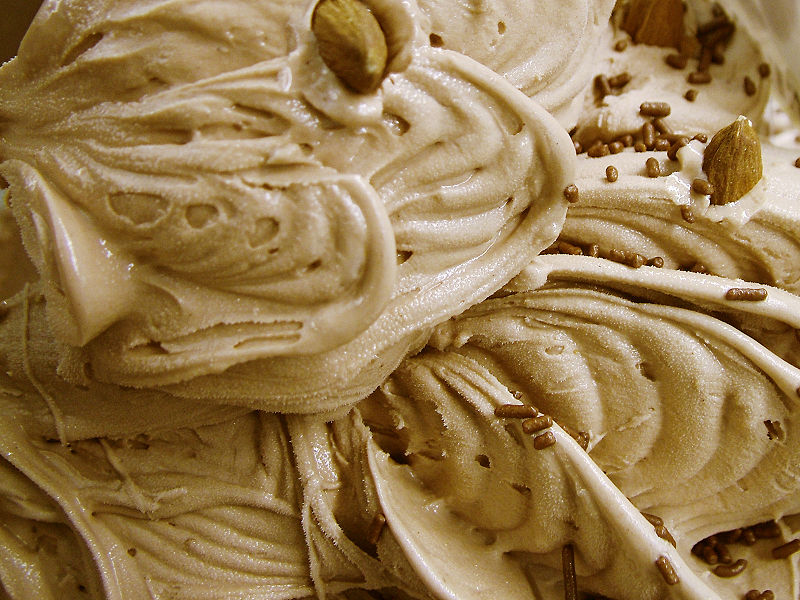Paleolithic Nutrition: Chronic Inflammation
 Thursday, January 5, 2012 at 09:32PM
Thursday, January 5, 2012 at 09:32PM  By John Michael
By John Michael
It was Monday night, and I had just finished packing my bags. With everyone else in the house asleep, I had nothing to do but think about my flight the next day. I would be leaving Denver at seven AM, and arriving in my Midwestern hometown sometime in the early afternoon.
I love eating Paleo, but every now and then, especially late at night, I succumb to the lure of other foods, processed foods… industrial foods.
This time it was my nerves. I get anxiety when I travel, and ever since I was a little boy, I’ve used junk food to calm myself. Normally, I eat well, but when anxiety appears, old habits follow. That’s how I ended up in front of my parent’s open freezer at midnight, with its pale light and steaming air pouring over me.
Tuesday morning I woke with a tingling rawness in my gums. I’d fallen asleep without brushing my teeth; an empty pint of ice cream was on my bedside table.
After brushing, the gum inflammation subsided, but I was left wondering, Had this always happened before I went Paleo? Or had I just become sensitive?
Then I thought of the other foods that made me feel inflamed. When I ate tomatoes, my entire body tingled slightly. Not to mention what wheat products did to my GI tract. John Michael’s recipe for farts and bloating: just add grain.
Consideration of my irritated gums sobered me. Had I always had these inflammatory reactions to food but lacked the discernment to notice? Had my body been chronically inflamed by the profligate diet of my early years?
The Search Begins
I’d heard about chronic inflammation on the news, knew it as a silent killer that could secretly spread through my body. But I’d never taken the time to actually learn how it occurred; I’d only heard enough to create a phantom in my mind, a shadowy figure that fear inflated until it loomed over me.
Better, I thought then, to just ignore it.
But I’m not a young man anymore; the damage I do to my body today no longer miraculously disappears tomorrow. Compelled by my irritated gums, I decided to put aside my fear and face the specter of chronic inflammation.
The Mechanism of Inflammation
When a splinter enters my thumb, it incites inflammation. Nearby cells release chemicals, called inflammatory mediators, which activate an autoimmune reaction. In response, blood vessels dilate, filling the damaged area with fluids. This causes swelling and redness, and isolates the injured tissue.
Then immune cells arrive to consume cellular debris and pathogens. When no further damage occurs, the release of inflammatory mediators subsides, and the process of acute inflammation ends.
Unless another splinter pierces my thumb, in which case inflammation begins anew. And if splinters constantly stick my thumb, then it never stops. With irritation never ceasing, cells consistently release inflammatory mediators, and acute inflammation becomes chronic
Chronic Inflammation Revealed
Our own cells are often the victims of these responses. The persistent immune assault can wear them down, reducing their effectiveness and increasing the likelihood of damage and death. It’s logical then that chronic inflammation should play a role in so many diseases.
It can cause cancer by damaging cellular DNA, thus predisposing cells to dangerous mutations. And inflammation also aids in the growth of tumors, often hijacked by cancer to assist in its own development. It even appears in Alzheimer’s, with the brains of sufferers displaying all the signs of a chronic inflammatory response.
One study cited by Dr. John in a recent talk he gave, “New Research on the Role of Nutrition on Neurological Function,” suggests, “Depression belongs to the spectrum of inflammatory and degenerative disorders.” Another study from his presentation notes that when high levels of inflammatory mediator C-reactive protein were found in stroke patients, chances were high they would also have problems with planning, decision-making, and self-control.
The agents of chronic inflammation are many, from lifestyle choices like smoking and diet, to other factors like repeated infection. Obesity incites it, as fat cells leak and rupture, exciting an autoimmune response. Antibiotics, chemicals, and even undigested food can cause it as well.
Avoiding Inflammation
The picture these studies paint is one of the human body as an intricate collection of delicately balanced components, easily destabilized by the introduction of toxic elements.
We can maintain this delicate balance by making good choices, like avoiding cigarettes and other tobacco products. Eating Paleo can re-establish our omega-3 to omega-6 ratio, which is at an unhealthy 1 to 15 in the Standard American Diet.
Spices like turmeric and ginger have anti-inflammatory properties; toss some on your next meal. The probiotics found in yogurt can reduce inflammation by maintaining a healthy gut; if you avoid dairy, then supplements exist to meet your needs. Additionally, keeping a healthy body weight prevents inflammation caused by obesity, and reducing stress helps as well.


Reader Comments